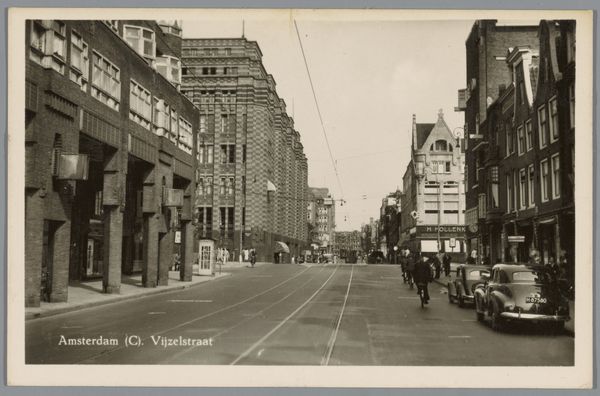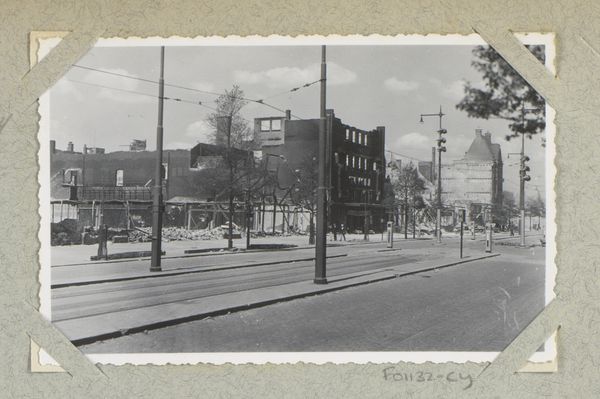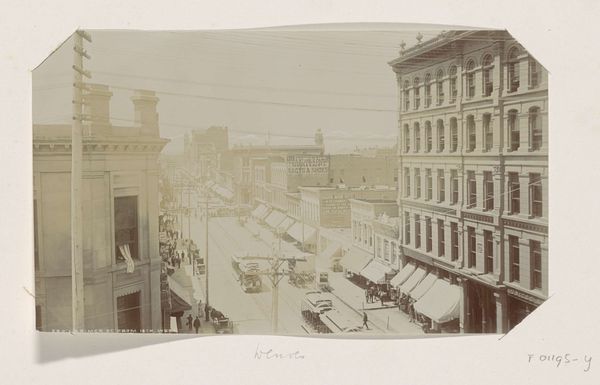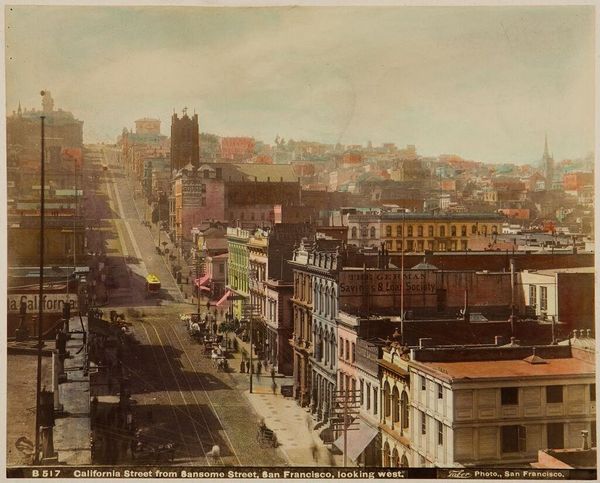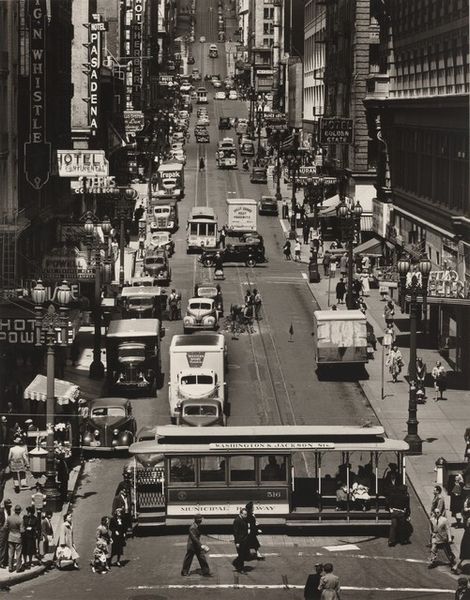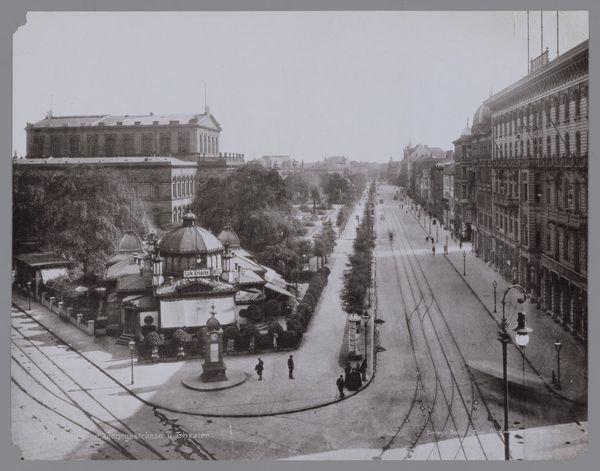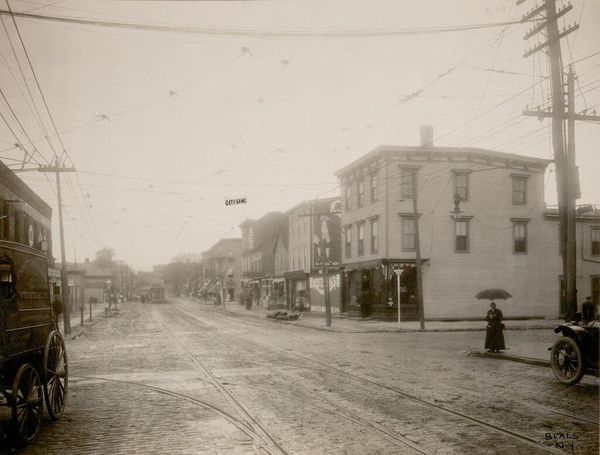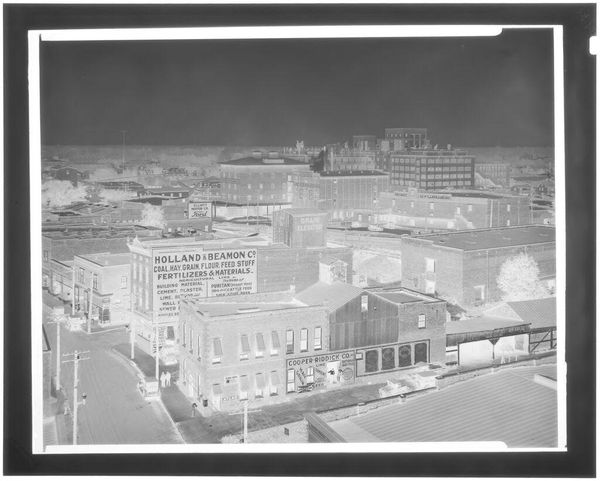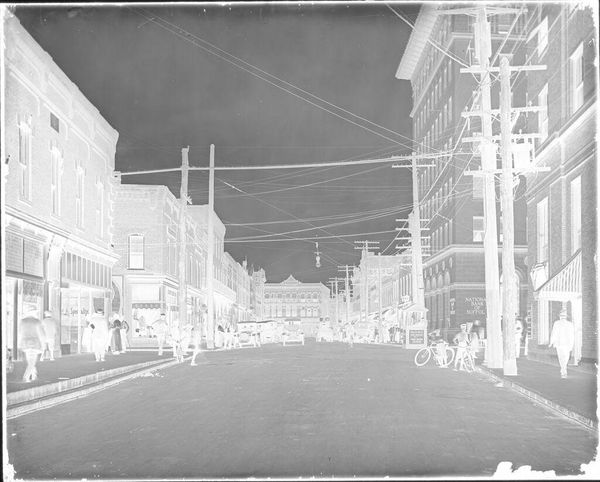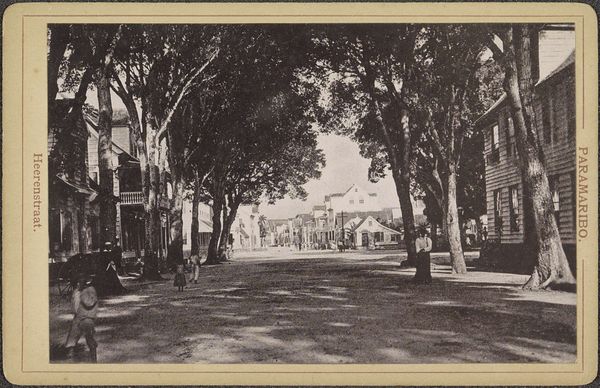
photography, gelatin-silver-print
#
street-photography
#
photography
#
historical photography
#
gelatin-silver-print
#
19th century
#
ashcan-school
#
cityscape
#
modernism
#
realism
Dimensions: sheet (trimmed to image): 19.1 x 19.8 cm (7 1/2 x 7 13/16 in.) mount: 21.6 x 27.8 cm (8 1/2 x 10 15/16 in.)
Copyright: National Gallery of Art: CC0 1.0
Curator: Walker Evans's "Bridgeport, Connecticut" from 1941, a gelatin silver print. It strikes me how matter-of-fact it is, yet there's something compelling in its ordinary depiction of urban life. What do you think? Editor: It's quite a stark photograph, very linear with all the cars and buildings leading your eye down the street. What strikes me is the sheer volume of cars, even back then. What aspects of the urban environment does Evans seem most interested in showcasing here? Curator: Think about the context. This is 1941, on the cusp of America's full entry into WWII. Bridgeport was an industrial hub. Consider the material reality: the steel and rubber of those cars, signs advertising affordable parking at just 15 cents—evidence of consumerism even during that time. Notice the tailoring and music businesses featured in signage – how are we meant to process these material desires, even as they conflict with more dire news from abroad? Editor: That's interesting, so you're saying he's less interested in the aesthetics of the city and more in the physical objects that defined people’s lives at the time? Is he making a statement about labor, maybe? Curator: Precisely. He’s presenting a visual inventory of the materials and industries that shaped this specific place and moment. Where does the 'Ashcan School' connection fit? Editor: Ah, yes, the Ashcan School focused on everyday life, particularly of the working class. I guess this is a photographic interpretation of that, focusing not just on people but also the material objects that surrounded them and, as you said, defined their lives. Curator: Exactly. And Evans doesn't romanticize it; he presents it directly, encouraging us to consider the societal implications of material culture and the labour involved in producing it all. Editor: So, it's about more than just a street scene; it's a snapshot of American industry, consumerism, and labor just before a massive shift in the global landscape. I’ll definitely look at Evans' work with a new perspective now!
Comments
No comments
Be the first to comment and join the conversation on the ultimate creative platform.
